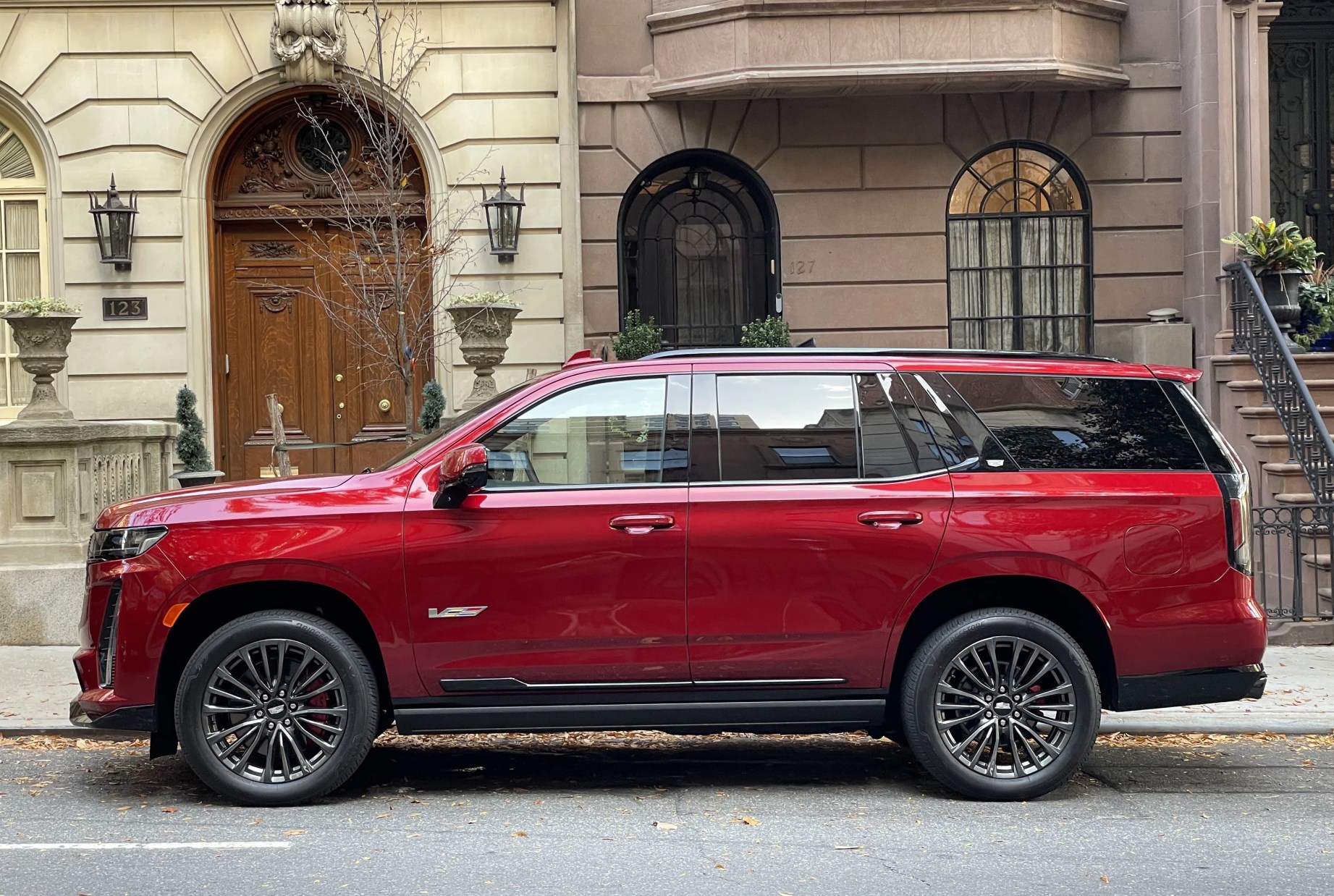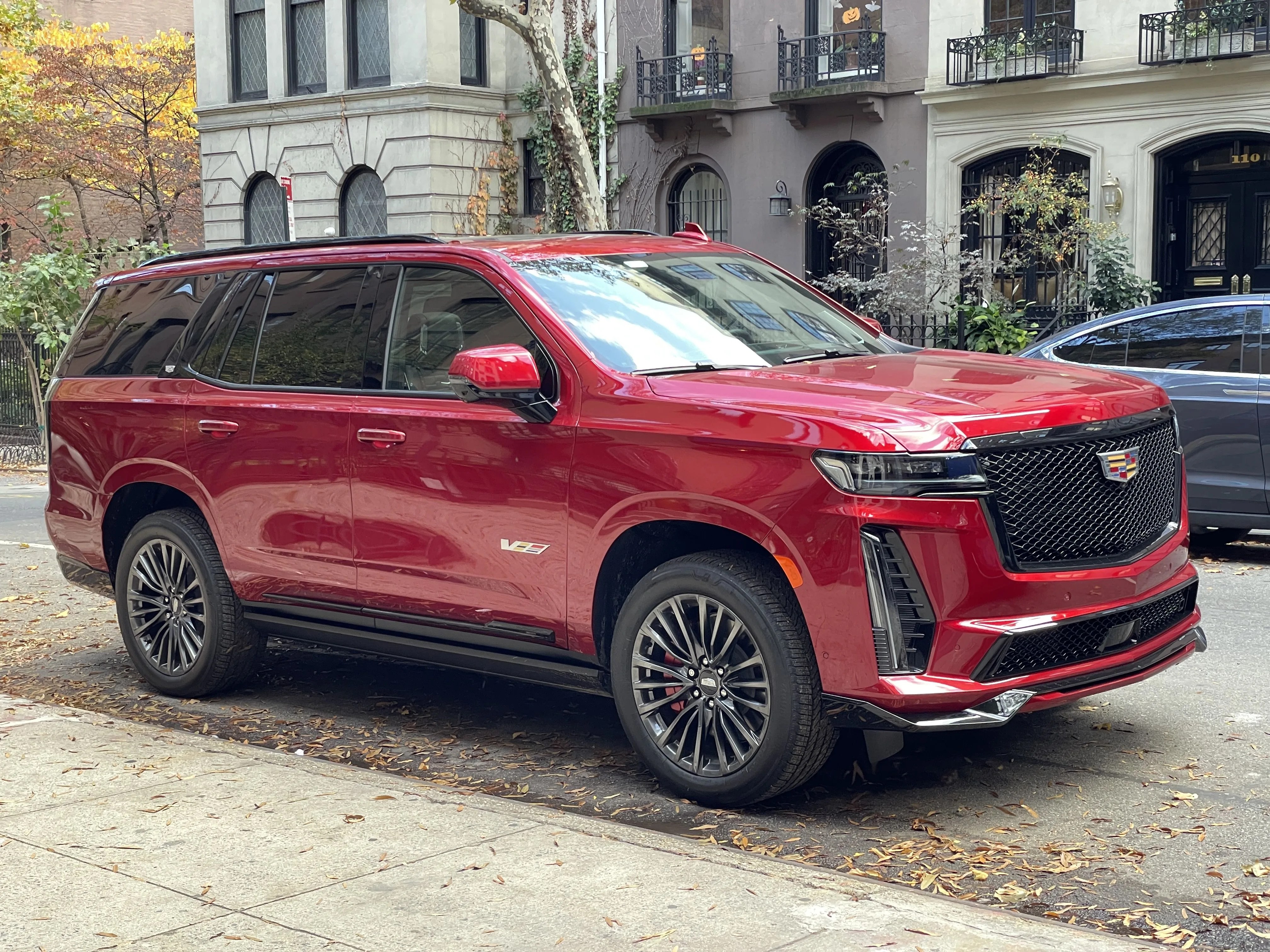Among people who give a damn about cars, in recent years, Cadillac has been known for two things: the Escalade sport-utility vehicle, and the V-Series line of performance vehicles. Yet while both of these names have been around for (automotive) generations — the first V-car bowed in 2004, while the Escalade first showed up in 1999 — Caddy never thought of pulling a Reese’s and putting these two great tastes together until the year 2022, even though luxury competitors have been cranking out full-size SUVs with performance-tuned engines for some time now.
Nevertheless, with electrification looming (remember, Cadillac has promised to go all-EV in the next decade) and the most powerful version of its supercharged 6.2-liter V8 ever made now available under the hood of the CT5-V Blackwing, the time was right for the V badge and the Escalade nameplate to finally meet. Revealed last year, the Escalade-V packs the most potent engine ever outfitted to a production Caddy, with 682 horsepower manifesting under its hood at the flex of the driver’s ankle.
Having spent quite a bit of very joyful time behind the wheels of various Cadillac V-cars over the years, I was fairly excited to clamber behind the wheel of the largest and largest one. So when General Motors offered me a chance to put it through its paces in my daily life, well, that was a very easy yes. Here’s what I learned.
The Escalade-V is more muscle car than sports car
 Will Sabel Courtney
Will Sabel CourtneyWell, for the sake of the analogy, ignore the fact that it’s not a car at all — it’s a three-row, body-on-frame SUV based on a full-size pickup truck platform. Still, it holds. While SUVs like the Porsche Cayenne Turbo GT, Lamborghini Urus Performante and Aston Martin DBX 707 push the boundaries when it comes to the sort of lateral grip and handling you expect from a high-riding machine, the Escalade-V is more content to take turns at a leisurely pace.
Credit, or blame, a trio of factors:



